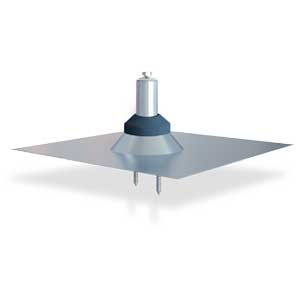
Roof tiles do not require cutting, only a hole drilled. Its single lag bolt design requires less drilling. TileTrac is technically the easier of the two mounting systems to install. Images of a TileTrac installation are below. TileTracuses a single flashing that drops over the stud and onto the tile. The picture below shows its installation. QBase uses double flashing. From the picture above, you can see that the Quick Mount product comes with two flat pieces of metal. Single flashing usually refers to just flashing fastened to the outside of the tile. Double flashing means there’s a piece of metal fastened to the roof, and another piece of metal fastened to the outside of the tile. When it comes to solar installations, there’s double flashing and single flashing. Flashingįlashing, or weatherproofing, refers to thin pieces of impervious material installed to prevent leaks. Both of these products are intended to do exactly the same thing: be a load-bearing structural attachment that is both secure and leak-proof.

QBase uses a 4-gusset circular base and standoff for load-bearing, TileTrac uses a threaded stud and an aluminum base to distribute weight. QBase allows for the use of two or four lag bolts, while TileTracis a single lag bolt design. Designīoth products are designed to be attached to a rafter. As you can see, the Quick Mount PV product, QBase, comes with a lot more pieces. On the left you have QBase, on the right is TileTrac. Admittedly, I am biased because at Baker we use a lot of Quick Mount PV products and don’t use TileTrac, but regardless I will attempt to give honest assessment of both products. These two products are commonly seen in residential solar installations with tile roofs. The solution to both concerns is relatively simple: find a great solar company that is reputable and uses proper installation techniques and products. That’s a long time for material to breakdown and leaks to form, and is a really important reason why the work of attaching a solar array to a roof needs to be done well. Solar installations are semi-permanent additions to homes that have an intended life of 25+ years. The long-term concern is roof/home damage. Does your solar installer warranty the penetrations they make in your roof? The short-term concern is the quality of work your solar company will do. In my mind, this raises two concerns – one immediate and one down the line. The roof mount product used dictates exactly how hundreds of pounds of solar panels are attached to a roof. When a homeowner opts to have a PV installation added to their roof that means two things are going to happen: dozens of holes are going to be drilled through the roof and tiles will be removed.

Voiding Warranties and Avoiding Leaksīefore we jump into the product review, let’s talk first about why using the proper roof mount product is critically important. With that in mind, in this blog post I’ll do a side-by-side comparison of two popular roof mounts for solar installations on tile roofs – Quick Mount PV’s QBase Universal Tile Mount and Prosolar’s TileTrac.

But have you thought about how the solar installation is attached to your roof? It doesn’t seem to be a topic that’s as researched as panel and inverter brands by consumers, but it really should be.Ī lot of what I write is intended to inform solar consumers of the industry, hopefully arming them with knowledge so that they can make wise choices – especially when it comes to choosing a solar company. If you’re considering a solar (PV) installation, you’ve probably thought about issues like roof warranties and other factors that affect one of your best assets – your house.
#Quickmount metal roof attachment download#
Download instructions here.Roof Mount Product Comparison for Residential Solar Same superior waterproofing protection and fast single bolt installation, with an additional 1/2" extension on the hanger bolt above the block, allowing for up to 7/8" vertical adjustment for bottom-mounted rails. E-Mount Extended - with Extended Hanger Bolt There's no shingle cutting and no shingle distortion caused by trying to force a fit. If the exposure is greater than this, use the Classic Shake Mount as an alternative. The 9 x 12-inch E-Mount flashing is designed to fit within a standard 5 to 5.625" course and the exposed course should be no greater than 5.75". Meets or exceeds roofing industry best practices.20-year warranty 50-year expected life.Won't void roof manufacturer's warranty.


 0 kommentar(er)
0 kommentar(er)
